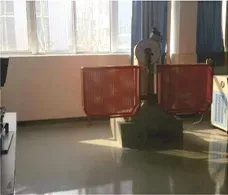china cellulose welding rod e6011
Exploring China Cellulose Welding Rod E6011 A Comprehensive Overview
In the realm of welding, the choice of electrode is crucial to both the quality of the weld and the efficiency of the process. One widely recognized product in this market is the cellulose welding rod E6011, particularly as manufactured in China. Understanding its composition, applications, and advantages can provide a clearer perspective on its significance within the welding industry.
Composition and Characteristics
The E6011 welding rod is a type of shielded metal arc welding (SMAW) electrode that features a cellulose-based coating. This specific coating plays a vital role in the welding process by providing a protective gas shield, ensuring a clean and strong weld. The numerical designation 6011 indicates the welding rod's tensile strength and usability characteristics. In this instance, the 60 denotes a minimum tensile strength of 60,000 psi, the 1 indicates that it is suitable for all positions, and the second 1 signifies that it can be used with either alternating or direct current.
The cellulose content in the coating is essential because it aids in the production of a stable arc and a smooth, high-quality finish. This type of electrode is also known for its ability to penetrate through rust, paint, and mill scale, which makes it a versatile choice for a variety of welding environments.
Applications of E6011 Welding Rods
The E6011 cellulose welding rods are particularly popular in industries where versatility and adaptability are paramount. They are used extensively in construction, shipbuilding, and various repair operations. The ability to weld on dirty, rusty, or oily surfaces makes the E6011 a favorite among professionals who often find themselves in less-than-ideal conditions.
Additionally, these rods are suitable for a wide range of materials, including low and medium carbon steels. The E6011 can also be used for vertical and overhead welding applications, providing welders with the flexibility to tackle complex projects without needing to switch to a different electrode.
china cellulose welding rod e6011

Advantages of Chinese Made E6011 Rods
China has increasingly become a key player in the welding supply industry, and its cellulose welding rods, particularly the E6011, exemplify the country's manufacturing capabilities. One of the most significant advantages of Chinese-made E6011 rods is their cost-effectiveness. Due to lower production costs, these rods are often priced competitively, making them an attractive option for both small operations and larger industrial enterprises.
Moreover, advancements in manufacturing techniques have resulted in improved quality standards for Chinese welding rods. Many manufacturers comply with international standards, ensuring that their products deliver high performance and consistent results. This adherence to quality control not only meets the expectations of domestic consumers but also facilitates export to global markets.
Considerations for Use
While E6011 cellulose welding rods offer many advantages, they also require proper handling and storage to maintain optimal performance. The rods should be stored in a dry environment to prevent moisture absorption, which can adversely affect the arc stability and weld quality. Furthermore, proper technique during welding, such as maintaining an appropriate travel speed and arc length, is vital for achieving the best results.
Conclusion
In summary, the E6011 cellulose welding rod produced in China is a high-performance electrode suitable for various applications across multiple industries. Its composition allows for a versatile welding experience, catering to both skilled welders and those in need of reliable equipment for challenging conditions. As the demand for quality welding supplies continues to grow, the E6011 welding rod stands out as an essential tool in the arsenal of both professionals and enthusiasts alike. Its affordability, ease of use, and robust performance illustrate why it remains a preferred choice in the market today.
-
Best MIG Welding No Gas Flux Core Solution – Easy, Portable & Clean WeldingNewsJul.08,2025
-
7018 Welding Rod 3/16 - High Strength, Low Hydrogen Electrodes Wholesale 3/32 Welding Rod 7018 Suppliers & China 7018 AC Welding Rod FactoryNewsJul.08,2025
-
High Quality MIG Aluminium Welding Wire - Wholesale Factory Prices from China SuppliersNewsJul.07,2025
-
High-Quality Gasless Aluminum Welding Wire China Gasless Aluminum MIG Wire SupplierNewsJul.07,2025
-
High Quality Ordinary Welding Rod for Pipes – Reliable China Welding Rod 7016 SupplierNewsJul.06,2025
-
Welding Wire 0.9 mm ER70S-6 Supplier Wholesale Manufacturers & FactoriesNewsJul.06,2025


